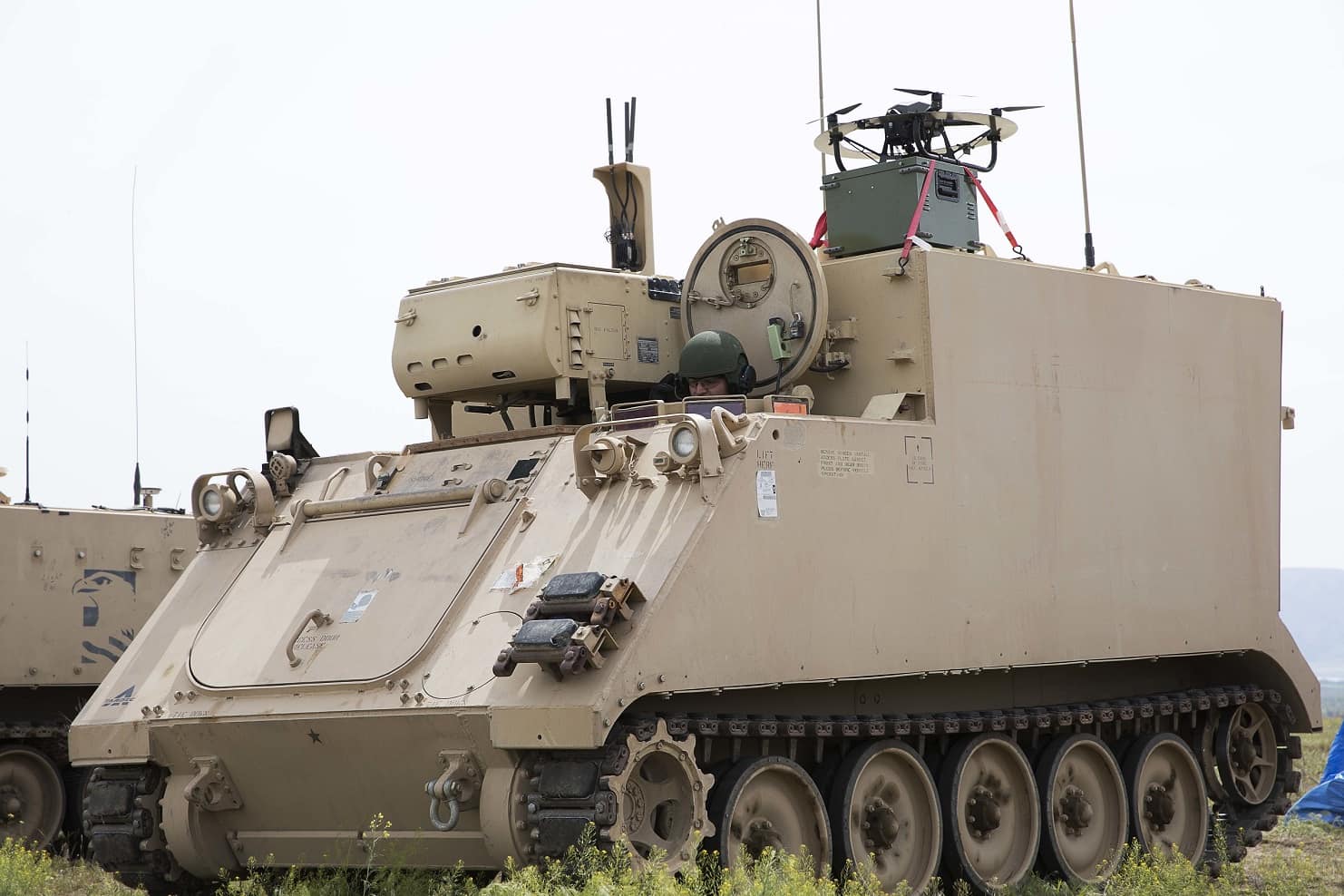During a demonstration of next-generation technologies in support of Joint Warfighter Assessment 19 at Yakima Training Center was unveiled Assault Breacher Vehicle that was converted to armed robotic platform or surrogate combat vehicle.
The surrogate robotic combat vehicle based on the Assault Breacher Vehicle (ABV) to enables soldiers to control robotic ground vehicle from a manned platform, reducing risk and increasing stand-off distances for personnel.
This surrogate vehicle was specially designed to clear pathways for troops and other vehicles through minefields and along roadside bombs and improvised explosive devices. The new vehicle can be remotely operated from M577 Armored Command Vehicle modified with next-generation technologies.

Photo by Spc. Patrick Hilson
Furthermore, the 72-ton, 40 foot (15 m) long ARVs are based on the M1 Abrams with a 1,500 horsepower engine, but fitted with a .50 cal machine gun and a front-mounted 15-foot (4.5 m) wide plow, supported by metallic skis that glide on the dirt and armed with nearly 7,000 lb (3,175 kg) of explosives.
U.S. Marines were interested in the technology, particularly the tanks, which can be remotely operated from more than a mile away to clear paths through mine fields and anti-tank trenches.
The integration of robotics on the assault breaching vehicle would take Soldiers and Marines out of the most dangerous part of breaching an obstacle.
“That is a very dangerous point to put Soldiers and Marines, especially when dealing with explosive obstacles,” said 1st Lt. David Aghakhan, AVB Platoon Commander, “This gives us the option to take the operator out of the vehicle, and still push that vehicle through the lane, creating that mobility for follow-on forces.”
But military officials said the technology being demonstrated was “proof of concept” to determine what could be done, and some of it could still be years away from being put on the battlefield in its final form.